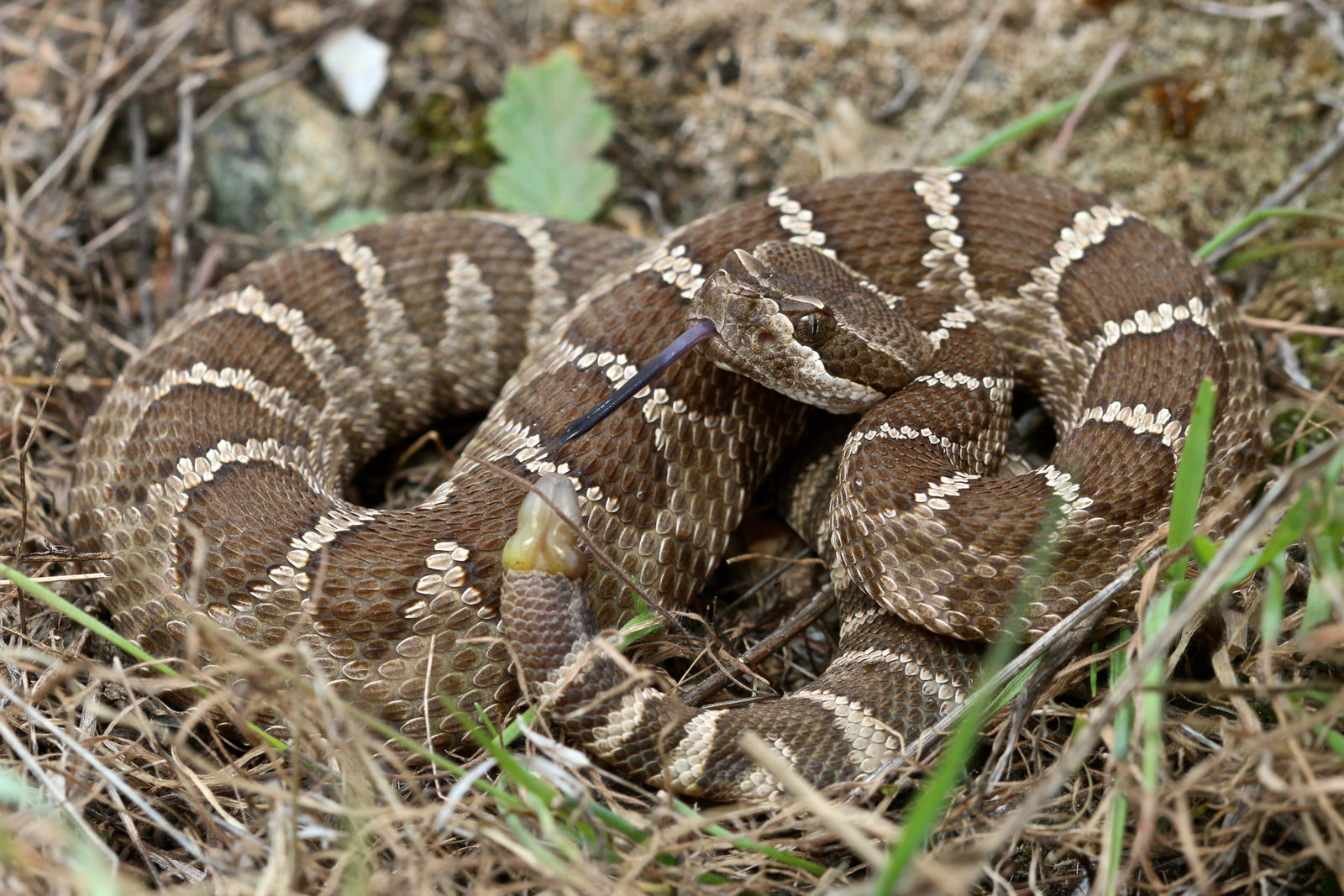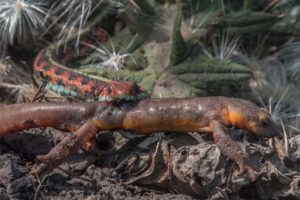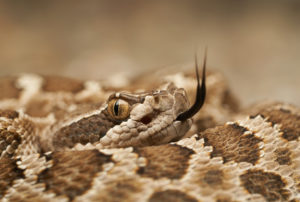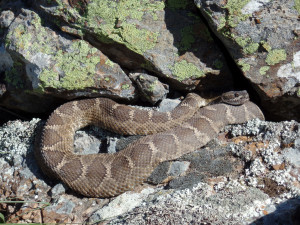Is it true that the bite of a baby rattlesnake is more dangerous than the bite of adult rattlesnake?
With warm spring temperatures finally settling in throughout the Bay Area, snakes of all kinds are active, including the only local species that poses any significant health risk to humans, the western rattlesnake (Crotalus oreganus). Having spent the winter denned-up in their hibernacula, these vipers are now on the move to their hunting and mating grounds, and as one recent rattlesnake bite on Mount Tam illustrates, more likely to encounter us humans.
According to reports, the snake involved in that incident was approximately nine to twelve inches in length, indicating that it was young. And this, of course, brings up the oft-repeated conventional wisdom that the bite of a young rattlesnake is more dangerous than the bite of an adult rattlesnake. While that is a tempting “fun fact” to repeat in conversation due to its inherent counterintuitiveness, is there any truth to this common belief?
“The story that juvenile rattlesnakes are more dangerous is simply folklore,” says Greg Pauly, a herpetologist at the Natural History Museum of Los Angeles County. The explanations that come with this belief generally follow two lines of reasoning: first, that the young rattlers can’t control the amount of venom they inject meaning they will inject everything they have; and second, that adult rattlers are more experienced and won’t “waste” their venom when giving a defensive bite — meaning they more often inject less venom or give a “dry” bite without any venom.
In the first case, even if it is true that young rattlers cannot control their venom (some studies show that they can), Pauly explains that “bigger snakes have much bigger venom sacs, and adults can deliver far greater volumes of venom than babies even if they only inject a small percentage of the total volume available.” Meaning, of course, that the potential severity of an adult bite is significantly higher than that of a young rattlesnake.

As to whether adult rattlesnakes give “dry” bites more often than young ones do, Pauly told me, “there isn’t solid data to suggest that the frequency of dry bites varies across age classes.” Either way, a paper by Lynchburg General Hospital doctor Donald Janes and colleagues in California, which examines nine years of snakebite reports in Southern California, concludes that “Rattlesnake size was positively correlated with [Snakebite Severity Score] … [and] we showed that patients bitten by larger snakes and who had more severe envenomations received more vials of antivenom and had longer hospital stays.”
However, note that any rattlesnake bite is a serious medical emergency and the victim should get to a hospital as soon as they can, meaning definitely do not cut or suck the wound. Here’s some excellent advice for how to handle a rattlesnake bite.
What’s best, of course, is to not get bitten in the first place. Rattlesnakes are shy animals and will only strike when left with no other option, such as when handled, accidentally stepped on, or cornered. The express purpose of that famous rattle is to keep the snake from being in a situation where it has to bite, which I think is pretty considerate. The majority of rattlesnake bites in the United States occur when someone purposely handles a rattlesnake, either by mistake or when trying to harass or kill it (yes, attempting to kill a rattlesnake is much more dangerous than leaving it alone).
Most of the latter bitees are young, male, and often intoxicated. So unless you are experienced enough to consider multiple features when identifying a snake, don’t handle it (and it is against the rules of most parks to handle or harass wildlife). In the Bay Area, rattlesnakes look quite similar to gopher snakes, night snakes, and juvenile yellow-bellied racers; young rattlesnakes, which are more prevalent in the spring, often lack a rattle on their tails, which further confuses the issue. When in doubt, give the snake a wide berth — it won’t chase after you.
It’s also prudent to be vigilant when you’re in rattlesnake habitat, especially around rock formations and outcrops. Rattlers use these areas as both shelters and basking surfaces, so always watch your step and and your hand placement when climbing about on rocks. You might be enjoying the sun but inadvertently startle a rattlesnake who’s trying to do the same.
While rattlesnake are a concern in the Bay Area, practicing avoidance and vigilance will greatly reduce your chances of getting bitten. And if you should be lucky enough to encounter a rattlesnake in the wild, give the reptile some space and take a moment to admire it. I think it’s a privilege that we get to share this place with one of nature’s most beautiful, elegant, and polite predators.
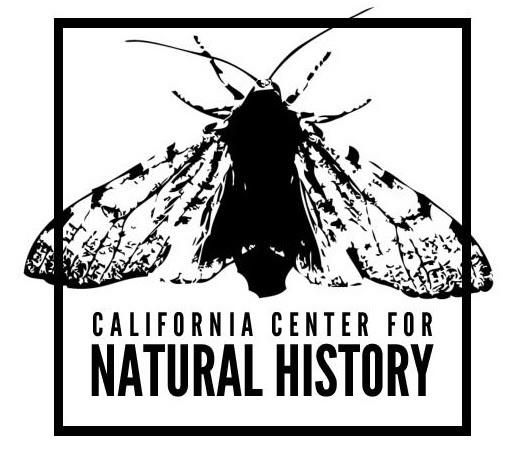
Ask the Naturalist is a reader-funded bimonthly column with the California Center for Natural History that answers your questions about the natural world of the San Francisco Bay Area. Have a question for the naturalist? Fill out our question form or email us at atn at baynature.org!

